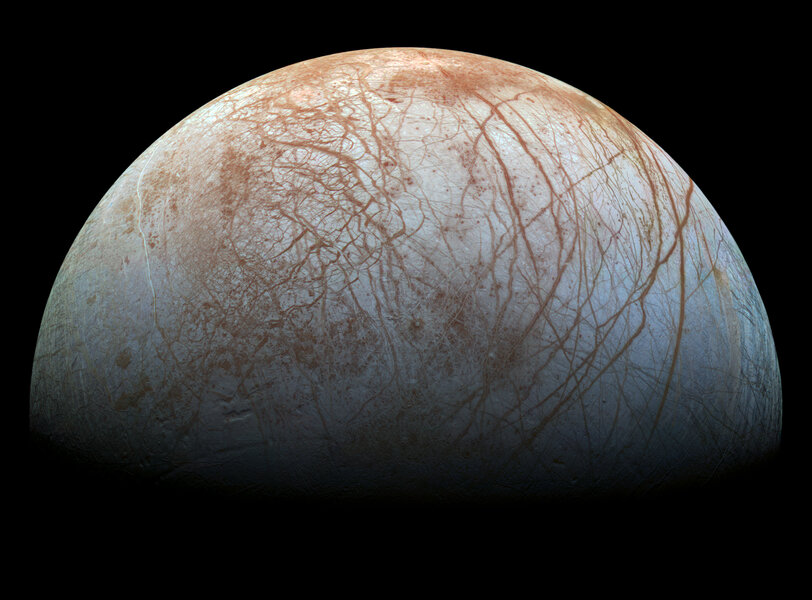Why is there irradiated sea salt on the surface of Jupiter's moon?
Loading...
The rusty brown lines scrawled across the surface of Europa, one of Jupiter’s moons, have baffled scientists for decades. However, a recent NASA study published in the journal Geophysical Research Letters, suggests the lines could be sea salt from a subsurface ocean that has been discolored by radiation.
Europa is popular topic of study because it may give insight into conditions on other icy moons throughout the universe. With its subsurface ocean, it is one of the most likely places in the solar system to be able to support life.
"If it's just salt from the ocean below, that would be a simple and elegant solution for what the dark, mysterious material is," said research lead Kevin Hand, a planetary scientist at NASA's Jet Propulsion Laboratory in Pasadena, California.
A previous study by NASA's 1989 Galileo Mission attributed the discoloration to a substance containing sodium and magnesium, but this study takes other factors into account.
Thanks to powerful tidal forces from Jupiter and an elliptical orbit, Europa flexes and stretches as it orbits closer to and farther from Jupiter, creating volcanic activity below the surface and giving the moon higher temperatures than it could attain simply from sunlight. Europa is also bathed in radiation from Jupiter’s magnetic field.
The study was conducted in the lab, where Dr. Hand and his co-author, Robert Carlson, created a simulated version of Europa’s surface. They then measured the spectrum of each substance present and compared the results to observations made by spacecrafts and telescopes of Europa.
“Europa in a can,” as Hand calls it, was kept at a frigid negative 280 degrees Fahrenheit and was shot with an electron beam to mimic the radiation present on the moon’s surface. After being exposed to this environment for tens of hours – equivalent to a century on Europa's surface – the salt samples turned a brown color with similar spectra to those of the fractures on Europa.
"This work tells us the chemical signature of radiation-baked sodium chloride is a compelling match to spacecraft data for Europa's mystery material," Hand said.
Additionally, the color of the salt sample got darker the longer it was exposed to the radiation, which Hand thinks will allow them to date the geographical features on the icy moon.
"We have many questions about Europa, the most important and most difficult to answer being is there life? Research like this is important because it focuses on questions we can definitively answer, like whether or not Europa is inhabitable," said Curt Niebur, Outer Planets Program scientist at NASA Headquarters in Washington. "Once we have those answers, we can tackle the bigger question about life in the ocean beneath Europa's ice shell."
NASA’s 2016 yearly budget proposal included planning an unmanned mission to Europa for the first time. Jet Propulsion Laboratory managed NASA’s 1989 Galileo mission, which studied Jupiter and its moons, and is developing the logistics of sending a spacecraft directly to Europa. The mission is slated to launch in the mid-2020s.






